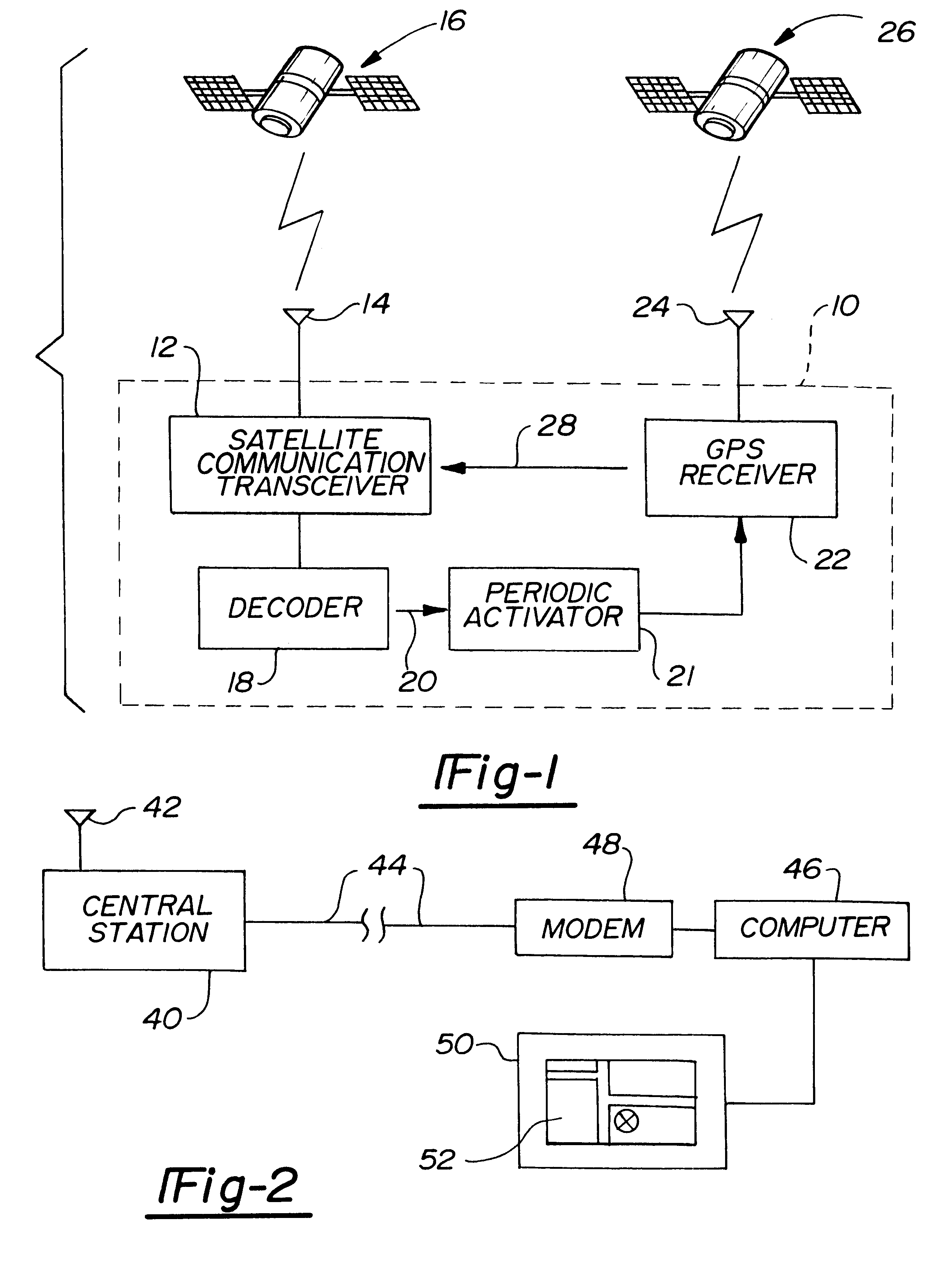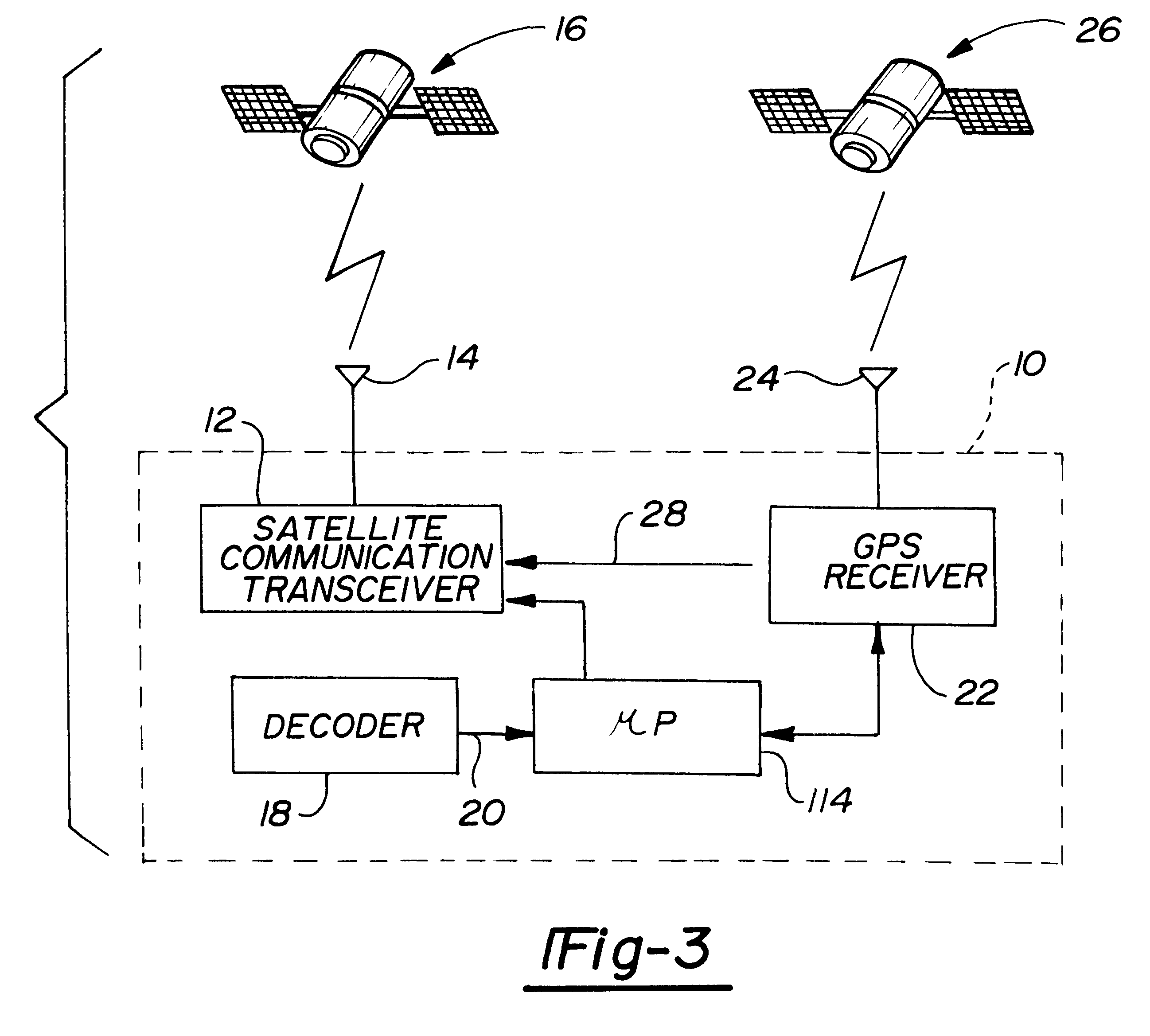Object location system
a technology of object location and location system, applied in the field of object location system, can solve the problems of increasing not only the cost but the convenience of the previously known system, and the system lacks a convenient means, so as to reduce the energy consumption of the mobile unit, reduce the cost of activation of the satellite communication transmitter in the mobile unit, and save energy.
- Summary
- Abstract
- Description
- Claims
- Application Information
AI Technical Summary
Benefits of technology
Problems solved by technology
Method used
Image
Examples
Embodiment Construction
With reference first to FIG. 1, a block diagrammatic view of a preferred embodiment of a mobile unit 10 of the present invention is there shown. The mobile unit 10 is associated with the object to be located, for example, a child, pet, mentally incapacitated person or an inanimate object.
The mobile unit 10 includes a satellite communication transceiver 12 having an antenna 14 to provide two-way communication between the transceiver 12 and a communication satellite 16. The communication satellite 16 is typically operated by telephone service companies and provide two-way radio communications between the Earth and the satellite in the well-known fashion.
Still referring to FIG. 1, a decoder 18 is associated with the transceiver 12 in order to detect a coded signal unique to the particular mobile unit 10, such as a telephone number. Once the decoder 18 detects the unique signal, the decoder 18 generates a signal on its output line 20 to a GPS receiver 22.
The GPS receiver 22 communicates...
PUM
 Login to View More
Login to View More Abstract
Description
Claims
Application Information
 Login to View More
Login to View More - R&D
- Intellectual Property
- Life Sciences
- Materials
- Tech Scout
- Unparalleled Data Quality
- Higher Quality Content
- 60% Fewer Hallucinations
Browse by: Latest US Patents, China's latest patents, Technical Efficacy Thesaurus, Application Domain, Technology Topic, Popular Technical Reports.
© 2025 PatSnap. All rights reserved.Legal|Privacy policy|Modern Slavery Act Transparency Statement|Sitemap|About US| Contact US: help@patsnap.com



